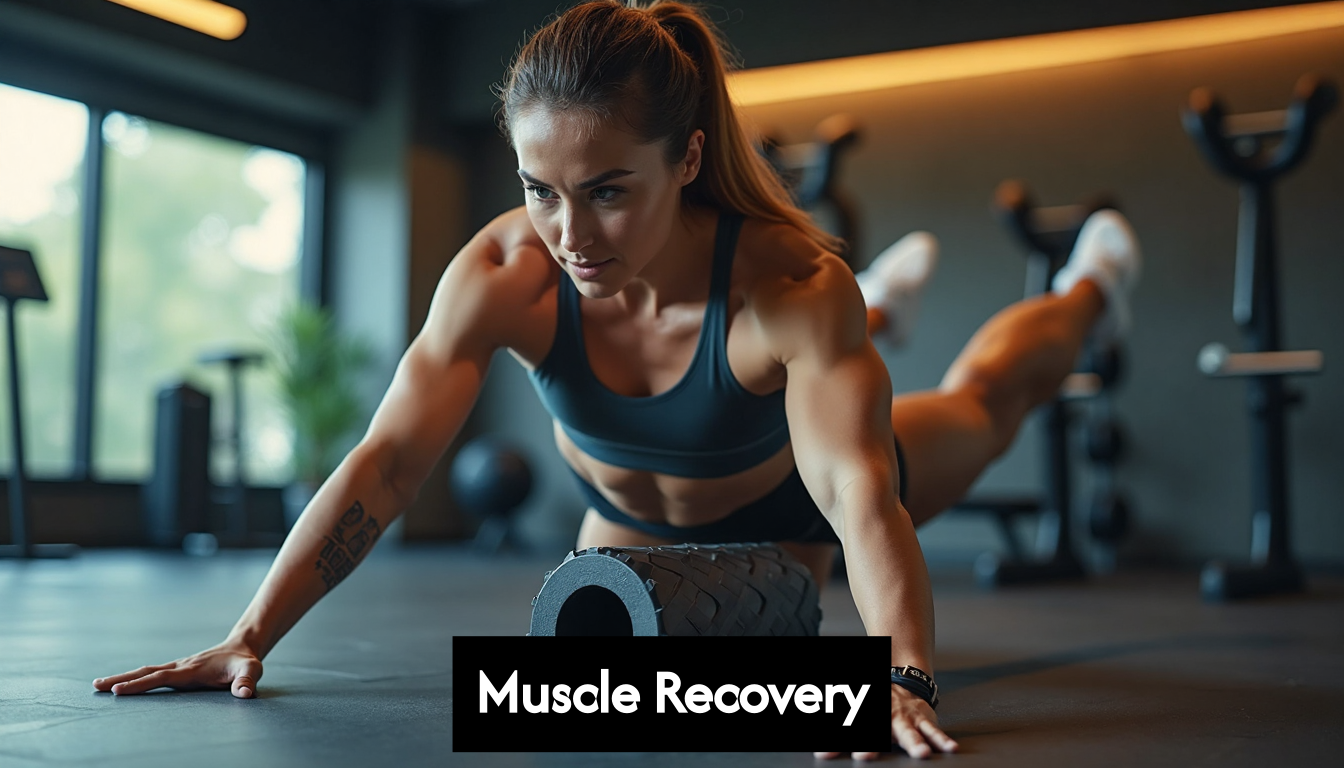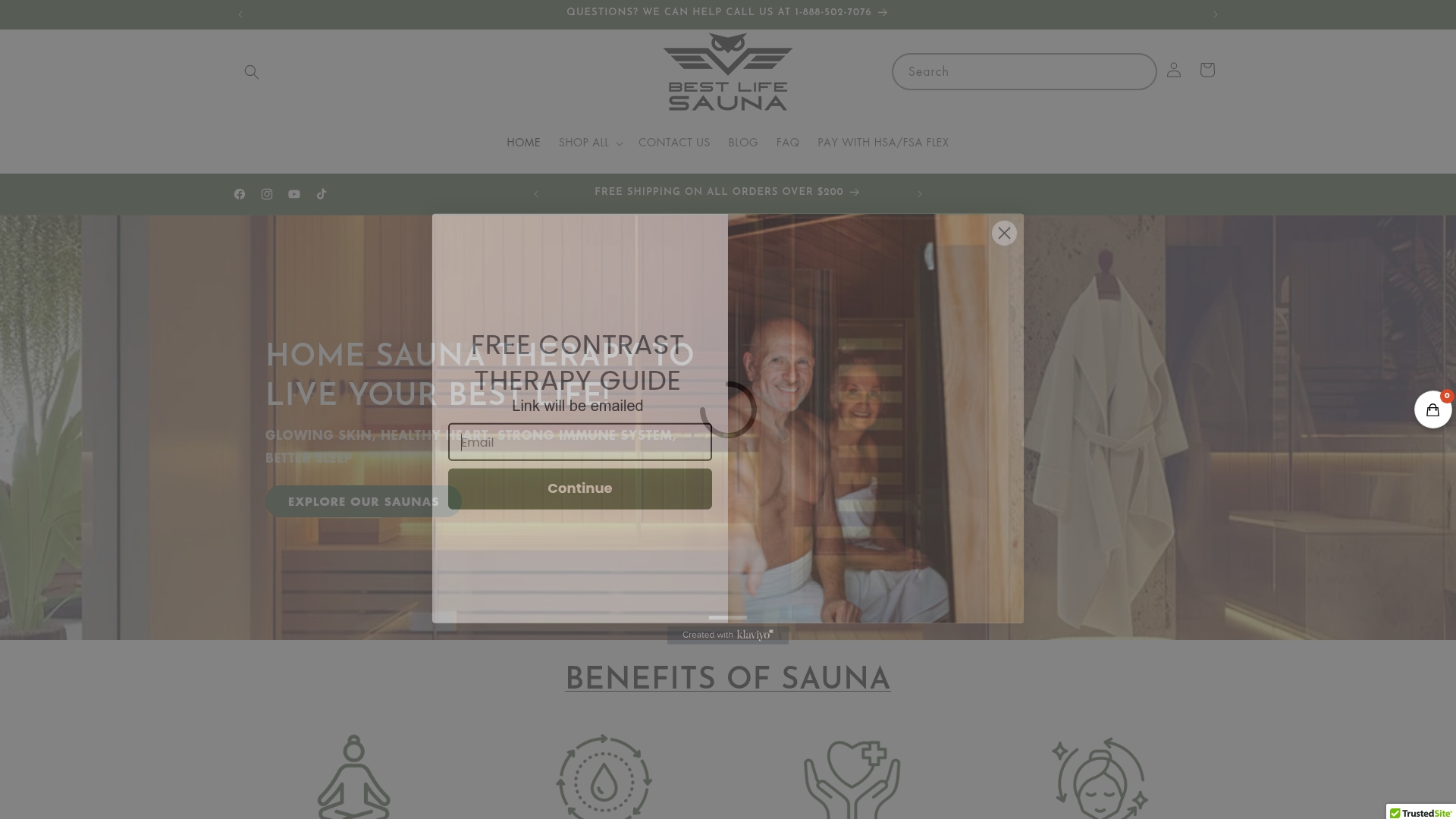
Sauna for Better Performance: Athlete Benefits
 Athletes are constantly seeking ways to gain an edge in performance and recovery. Sauna therapy is emerging as a powerful ally that many are just beginning to discover. Studies show that incorporating sauna use can lead to a staggering 32% increase in endurance performance for athletes. But here’s the twist: it’s not just about sweating it out. Beyond relaxation, sauna sessions can supercharge muscle recovery and enhance cardiovascular capabilities. The unexpected benefits will transform how you approach your training regimen.
Athletes are constantly seeking ways to gain an edge in performance and recovery. Sauna therapy is emerging as a powerful ally that many are just beginning to discover. Studies show that incorporating sauna use can lead to a staggering 32% increase in endurance performance for athletes. But here’s the twist: it’s not just about sweating it out. Beyond relaxation, sauna sessions can supercharge muscle recovery and enhance cardiovascular capabilities. The unexpected benefits will transform how you approach your training regimen.
Table of Contents
- How Sauna Boosts Athlete Performance
- Sauna Use Speeds Up Muscle Recovery
- Improve Endurance Through Heat Training
- Best Practices For Sauna Use
Quick Summary
| Takeaway | Explanation |
|---|---|
| Heat Adaptation Enhances Endurance | Regular sauna use can increase plasma volume and improve cardiovascular efficiency, leading to a 32% increase in time to exhaustion for athletes. |
| Accelerated Muscle Recovery | Sauna sessions promote blood circulation, flush metabolic waste, and stimulate heat shock proteins, aiding in faster muscle repair and reduced soreness post-exercise. |
| Strategic Sauna Use is Key | Begin with 10-15 minute sessions at moderate temperatures, gradually increasing duration and intensity while ensuring proper hydration before and after to maximize benefits. |
How Sauna Boosts Athlete Performance
Athletes are constantly searching for innovative strategies to enhance performance and recovery. Sauna therapy has emerged as a powerful tool that goes far beyond relaxation, offering significant physiological benefits that can dramatically improve athletic capabilities.
Heat Adaptation and Endurance Enhancement
Heat exposure through sauna sessions triggers remarkable physiological adaptations that directly impact athletic performance. Research published in the Journal of Science and Medicine in Sport revealed a groundbreaking finding: athletes who incorporated post-exercise sauna bathing experienced a remarkable 32% increase in time to exhaustion. This substantial improvement stems from critical changes in the body’s cardiovascular system.
Specifically, regular sauna use increases plasma volume by 7.1% and total blood volume, which translates to enhanced oxygen delivery and improved cardiovascular efficiency. For endurance athletes like runners, cyclists, and triathletes, this means a significant boost in sustained performance capabilities. The body becomes more adept at managing heat stress, which simultaneously improves overall cardiovascular function.
Accelerated Recovery and Muscle Performance
Beyond endurance, sauna sessions play a crucial role in muscle recovery and performance optimization. The intense heat stimulates blood circulation, helping to flush out metabolic waste products accumulated during intense training. University of South Australia researchers found that just five post-exercise sauna sessions can substantially enhance an athlete’s overall performance.
Performance Gains Across Different Sports
The benefits of sauna training extend across various athletic disciplines. Research in the Journal of Human Performance demonstrated that athletes in track and field events could see significant improvements in 5- and 10-kilometer performance through strategic sauna integration. Track athletes, sprinters, and endurance competitors can all leverage this natural performance enhancement technique.
For strength athletes, the increased blood flow and hormonal responses from sauna sessions can support muscle protein synthesis and reduce inflammation. Weightlifters and CrossFit athletes might find the recovery benefits particularly compelling, as the heat exposure helps mitigate muscle soreness and accelerates the body’s natural healing processes.
While sauna therapy offers remarkable benefits, athletes should approach it strategically. Start with shorter sessions, typically 10-15 minutes, and gradually increase duration. Proper hydration is crucial, and individuals should consult with sports medicine professionals to develop a personalized sauna integration strategy that aligns with their specific training goals and physiological needs.
Sauna Use Speeds Up Muscle Recovery
Muscle recovery represents a critical component of athletic training, and sauna therapy has emerged as a powerful, natural strategy to accelerate this process. Unlike traditional recovery methods, sauna use offers a comprehensive approach to healing and preparing muscles for subsequent training sessions.
Neuromuscular Performance and Healing
Research published in Sports Medicine revealed groundbreaking insights into sauna’s impact on muscle recovery, particularly among basketball players. A single infrared sauna session after resistance exercise demonstrated significant improvements in neuromuscular performance. Athletes experienced a reduced drop in explosive performance, such as countermovement jump capabilities, and reported substantially decreased muscle soreness the following day.
The physiological mechanisms behind this recovery acceleration are multifaceted. Heat exposure triggers increased blood circulation, which helps flush out metabolic waste products and delivers essential nutrients to damaged muscle tissues. This enhanced circulation promotes faster healing and reduces inflammation, a critical factor in muscle recovery. The controlled heat stress also stimulates the production of heat shock proteins, molecular chaperones that protect cells and aid in protein repair and regeneration.
Adaptive Stress and Performance Enhancement
Clinical research from exercise physiology journals suggests that combining sauna bathing with exercise can create an adaptive stress response. This means athletes can potentially amplify their training adaptations while simultaneously improving recovery processes. The heat exposure acts as a mild physiological stressor, encouraging the body to become more resilient and efficient in managing physical strain.
 Infrared sauna sessions have shown particular promise in this domain. Frontier research in Sports and Active Living indicates that regular post-exercise infrared sauna use can promote neuromuscular performance recovery. Athletes consistently using this method reported faster readiness for subsequent training sessions and reduced overall muscle fatigue.
Infrared sauna sessions have shown particular promise in this domain. Frontier research in Sports and Active Living indicates that regular post-exercise infrared sauna use can promote neuromuscular performance recovery. Athletes consistently using this method reported faster readiness for subsequent training sessions and reduced overall muscle fatigue.
Strategic Recovery Protocol
To maximize muscle recovery benefits, athletes should approach sauna use strategically. Experts recommend 15-25 minute sessions at temperatures between 150-190°F, immediately following intense training or within two hours post-workout. Hydration is paramount - athletes should consume approximately 16-24 ounces of water before and after sauna sessions to replace fluids lost through sweating.
Individual responses to sauna therapy can vary, so athletes are advised to start conservatively. Begin with shorter, less intense sessions and gradually increase duration and temperature. Those with pre-existing health conditions or cardiovascular concerns should consult sports medicine professionals before integrating sauna therapy into their recovery protocol.
While sauna use presents remarkable recovery potential, it should be viewed as a complementary strategy alongside proper nutrition, sleep, and traditional recovery techniques. The most successful athletes understand that muscle recovery is a holistic process requiring multiple synchronized approaches.
Improve Endurance Through Heat Training
Heat training represents a powerful yet often overlooked strategy for athletes seeking to dramatically improve endurance performance. By strategically exposing the body to controlled heat environments, athletes can trigger profound physiological adaptations that translate into significant performance gains.
Cardiovascular Adaptations and Performance Enhancement
Research published in the Journal of Science and Medicine in Sport revealed a remarkable breakthrough in endurance training. Runners who integrated post-exercise sauna bathing experienced a stunning 32% increase in time to exhaustion, accompanied by a 7.1% boost in plasma volume. This substantial improvement demonstrates how heat training fundamentally transforms the body’s cardiovascular capabilities.
The physiological mechanisms behind these gains are complex and multifaceted. Heat exposure stimulates plasma volume expansion, which means more blood can be pumped through the cardiovascular system. This enhancement allows athletes to deliver oxygen more efficiently to working muscles, effectively increasing aerobic capacity. For endurance athletes like runners, cyclists, and triathletes, this translates into the ability to sustain higher intensities for longer durations.
Thermoregulatory Efficiency and Adaptive Responses
Research from Outside Online’s sports science coverage highlights that heat training benefits athletes preparing for competitions in both hot and temperate environments. The body’s remarkable ability to adapt to heat stress creates comprehensive performance improvements beyond simple cardiovascular enhancements.
Specifically, heat training triggers several critical physiological adaptations. Athletes develop improved sweat response mechanisms, more efficient cooling systems, and enhanced blood flow distribution. These adaptations mean the body can maintain performance levels even under challenging environmental conditions. Notably, athletes who consistently incorporate heat training show reduced core body temperature during exercise and more stable metabolic functions.
Strategic Heat Training Protocols
Clinical studies in exercise physiology suggest specific strategies for integrating heat training into athletic preparation. Short-term heat acclimation protocols—typically involving 10-30 minute sauna sessions following regular training—produce substantial improvements in cardiorespiratory fitness and systolic blood pressure.
Athletes should approach heat training methodically. Start with shorter sessions at moderate temperatures, gradually increasing duration and intensity. Typical recommendations include 15-20 minute sauna sessions at temperatures between 170-190°F, performed 2-3 times weekly. Proper hydration is critical; athletes should consume approximately 16-24 ounces of water before and after heat training sessions.
While heat training offers remarkable benefits, individual responses vary. Athletes with pre-existing health conditions should consult sports medicine professionals before implementing intensive heat training protocols. The most successful approach combines heat training with comprehensive athletic preparation, including balanced nutrition, consistent training, and adequate recovery strategies.
Best Practices for Sauna Use
Successful sauna integration requires more than simply stepping into a heated room. Athletes and fitness enthusiasts must approach sauna use strategically to maximize physiological benefits and minimize potential risks.
Optimal Sauna Session Parameters
 Research from exercise physiology studies provides precise guidelines for effective sauna use. Ideal sessions typically range between 31-35 minutes at temperatures around 90°C, with a recommended frequency of 12-15 sessions over a three-week period. These parameters have been directly linked to significant performance improvements, including enhanced endurance and cardiovascular adaptations.
Research from exercise physiology studies provides precise guidelines for effective sauna use. Ideal sessions typically range between 31-35 minutes at temperatures around 90°C, with a recommended frequency of 12-15 sessions over a three-week period. These parameters have been directly linked to significant performance improvements, including enhanced endurance and cardiovascular adaptations.
Temperature and duration are critical factors. Most sports medicine professionals recommend starting with 10-15 minute sessions at 150-180°F, gradually increasing exposure as the body adapts. Beginners should start at lower temperatures and shorter durations, incrementally building heat tolerance. Humidity levels also matter - lower humidity allows for more comfortable and effective heat exposure.
Hydration and Recovery Strategies
University of South Australia researchers emphasize the importance of comprehensive hydration strategies surrounding sauna use. Athletes should consume approximately 16-24 ounces of water before entering the sauna and an additional 16-24 ounces immediately after the session. Electrolyte replacement becomes crucial, especially for those engaging in intense training before or after sauna exposure.
Timing is equally important. Clinical research suggests that sauna sessions are most effective when integrated immediately after exercise or within two hours post-workout. This timing maximizes the physiological stress adaptation and recovery benefits. Athletes should avoid sauna use when significantly dehydrated or immediately following extremely intense training sessions.
Safety and Individual Considerations
Individual response to heat exposure varies dramatically. Athletes with pre-existing cardiovascular conditions, recent injuries, or chronic health issues should consult sports medicine professionals before implementing a sauna training protocol. Warning signs such as dizziness, excessive fatigue, or unusual heart rates indicate the need to modify or discontinue sauna use.
Progressive adaptation is key. Start with shorter, less intense sessions and gradually increase duration and temperature. A typical progression might look like: 10 minutes at 150°F in the first week, increasing to 15-20 minutes at 170-180°F by the third week. Listen to your body and be prepared to adjust your approach.
While sauna use offers remarkable benefits, it’s not a standalone solution. The most effective approach combines sauna therapy with comprehensive training, proper nutrition, adequate sleep, and holistic recovery strategies. Athletes should view sauna use as one component of a sophisticated performance enhancement toolkit, not a magic solution.
Remember that individual responses to heat exposure can vary significantly. What works for one athlete might not be optimal for another. Careful monitoring, gradual progression, and personalized approach are the cornerstones of successful sauna integration into athletic training and recovery protocols.
Frequently Asked Questions
What are the performance benefits of using a sauna for athletes?
Using a sauna can lead to a significant increase in endurance performance, with studies showing up to a 32% increase in time to exhaustion. Additionally, sauna sessions enhance cardiovascular efficiency and muscle recovery.
How does sauna therapy help with muscle recovery?
Sauna therapy promotes blood circulation, flushes out metabolic waste, and stimulates the production of heat shock proteins, all of which aid in faster muscle repair and reduced soreness after intense exercise.
How often should athletes use a sauna for optimal results?
Athletes are recommended to start with 10-15 minute sauna sessions at moderate temperatures, gradually increasing duration and intensity. Ideally, incorporate sauna use 2-3 times a week for best benefits.
Are there any safety considerations when using a sauna?
Yes, athletes should monitor their body’s response to heat exposure. Individuals with pre-existing health conditions or who feel dizzy or fatigued should consult a healthcare professional before sauna use. Gradual adaptation to heat is important.
Elevate Your Training with Best Life Sauna
Are you ready to unlock the full potential of your athletic performance? The groundbreaking insights from our recent article on sauna benefits show that regular sauna sessions can enhance endurance by a staggering 32%, accelerate muscle recovery, and optimize overall performance. Imagine stepping into this wellness frontier, where you can transform your workout routine into a powerhouse of results.

At Best Life Sauna, we specialize in providing premium sauna solutions tailored to your needs. From infrared and traditional saunas to cold plunge tubs that can further boost recovery, we have everything to help you optimize your training strategy. Don’t wait to experience the profound benefits of elevated blood circulation, improved cardiovascular efficiency, and muscle healing.
Act now! Explore our selection at Best Life Sauna and take the first step towards achieving your peak athletic performance. With free shipping on orders over $200, integrating a sauna into your lifestyle has never been easier. Why not invest in your recovery and endurance today?
Recommended Articles
- Discover the Benefits of Outdoor Saunas for Health, Relaxation & Home – Best Life SaunaBest Life Sauna - Premium Saunas for WellnessAmerican ExpressApple PayDiners ClubDiscoverGoogle PayMastercardPayPalShop PayVisa
- Best Sauna Temperature 2025: Top Tips for Health Relaxation – Best Life Sauna
- Saunas for a Longer Life: The Surprising Health Benefits Backed by Sci – Best Life SaunaBest Life Sauna - Premium Saunas for WellnessAmerican ExpressApple PayDiners ClubDiscoverGoogle PayMastercardPayPalShop PayVisa
- Ultimate Sauna Installation Guide: Home Setup Made Simple – Best Life SaunaBest Life Sauna - Premium Saunas for WellnessAmerican ExpressApple PayDiners ClubDiscoverGoogle PayMastercardPayPalShop PayVisa
- 2025 Sauna Technology Innovations: New Era for Wellness – Best Life Sauna

